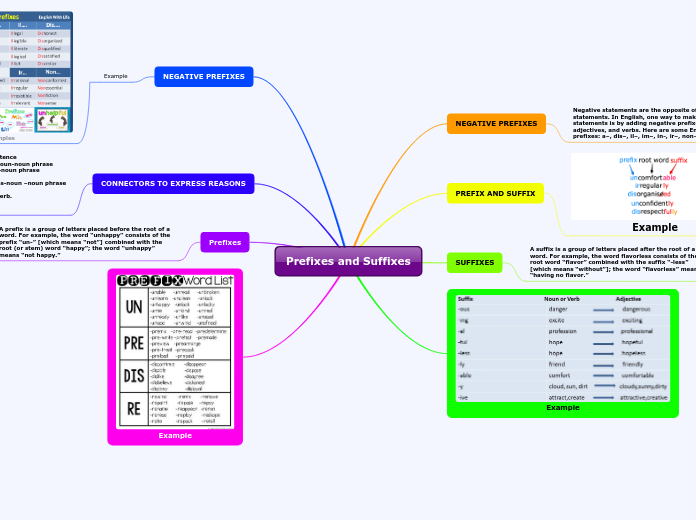Prefixes and Suffixes
NEGATIVE PREFIXES
Negative statements are the opposite of affirmative statements. In English, one way to make negative statements is by adding negative prefixes to nouns, adjectives, and verbs. Here are some English negative prefixes: a–, dis–, il–, im–, in-, ir–, non–, un–
PREFIX AND SUFFIX

Example
SUFFIXES
A suffix is a group of letters placed after the root of a word. For example, the word flavorless consists of the root word “flavor” combined with the suffix “-less” [which means “without”]; the word “flavorless” means “having no flavor.”

Example
NEGATIVE PREFIXES
Example

Add examples
CONNECTORS TO EXPRESS REASONS
Because: Sentence
Because of: noun-noun phrase
Due to: noun-noun phrase
For: sentences-noun –noun phrase
In order to: verb.
To: verb
Prefixes
A prefix is a group of letters placed before the root of a word. For example, the word “unhappy” consists of the prefix “un-” [which means “not”] combined with the root (or stem) word “happy”; the word “unhappy” means “not happy.”

